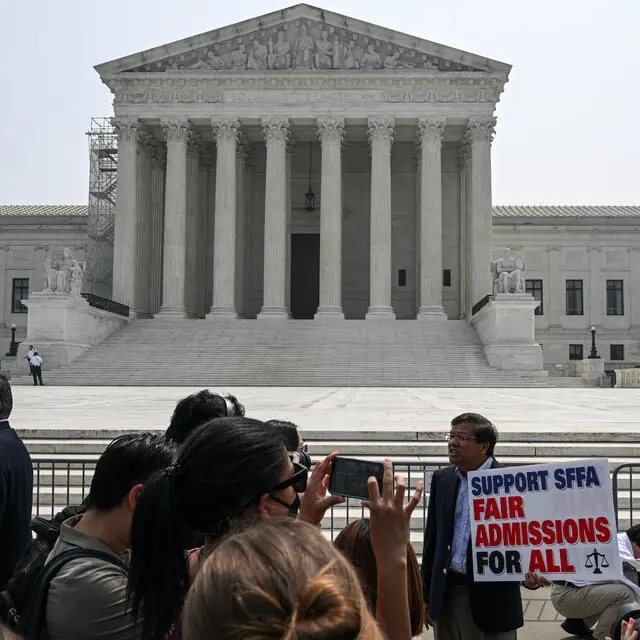The United States Supreme Court has declined to hear the appeal of a White student from Texas who alleged racial harassment and discrimination at his public high school. This decision marks the end of a controversial and emotionally charged case that stirred debate around race, free speech, and school policy across the country.
The case had attracted nationwide attention due to its uncommon racial dynamics where a White student claimed he was the victim of repeated racial slurs and targeted harassment by Black students, with school officials allegedly failing to take action. The student’s legal team argued that the school’s inaction amounted to racial discrimination, violating his constitutional and civil rights.
With the Supreme Court refusing to review the lower court’s decision, many are now reflecting on the broader implications of this case for civil rights protections in schools and the boundaries of legal remedies available to students who feel racially targeted—regardless of their racial background.
What Was the Supreme Court Racial Harassment Case About?
The student at the center of the case, identified as C.D. in court documents to protect his identity, attended the Hays Consolidated Independent School District in Texas. According to legal filings, he suffered consistent verbal and physical abuse due to his race. The harassment included racial slurs like “cracker,” “white boy,” and other derogatory terms, as well as physical altercations.
The student’s parents claimed that their repeated complaints to school officials were either ignored or downplayed. In 2021, they filed a lawsuit under Title VI of the Civil Rights Act of 1964, which prohibits racial discrimination in institutions receiving federal funds. The suit alleged that school administrators failed to take effective measures to stop the abuse, thereby creating a hostile learning environment.
However, both the district court and the U.S. Court of Appeals for the Fifth Circuit sided with the school district. They ruled that while the situation was “unfortunate and troubling,” the evidence did not demonstrate that school officials acted with “deliberate indifference” as defined under the law.
When the student’s family attempted to bring the matter to the Supreme Court, the justices declined without comment—effectively letting the lower court’s ruling stand.
Key Legal Question: What Counts as Deliberate Indifference?
At the heart of the Supreme Court racial harassment case was the legal standard of “deliberate indifference.” According to existing precedents, for a school to be held liable under Title VI, plaintiffs must show that officials knew about the harassment and failed to act in a clearly unreasonable way.
The plaintiff’s legal team argued that school officials knew the student was being racially harassed but failed to intervene adequately. They pointed to multiple complaints made to the school counselor, administrators, and even the local school board. They also cited incidents caught on school surveillance footage and statements from teachers confirming the hostile environment.
Despite this, the Fifth Circuit held that the school’s actions—though imperfect—did not rise to the level of “deliberate indifference” required for federal liability. The judges noted that the school took some disciplinary actions against the alleged harassers and arranged counseling for the victim, which they considered sufficient under legal standards.

Racial Harassment Lawsuits: Unusual Plaintiff, Familiar Pattern?
This case has been seen as unusual because most racial harassment lawsuits in schools involve minority students alleging mistreatment by peers or staff. The fact that the plaintiff was White reversed typical dynamics and challenged common assumptions about race-based discrimination.
Civil rights advocates were divided on the case’s significance. Some argued that racial harassment is wrong no matter the victim’s background and that schools must be held accountable for failing to protect any student. Others worried that accepting such lawsuits too broadly might dilute the intent of civil rights protections meant to uplift historically marginalized communities.
According to Professor Angela Simmons, an education law expert at the University of Texas, “This case forced the courts to confront the fact that racial harassment can affect anyone, and the law doesn’t say protection only applies to certain races. That’s an important message, even if the Supreme Court ultimately declined to weigh in.”
Family’s Reaction and Public Response
The student’s family expressed disappointment at the Supreme Court’s decision. In a public statement issued through their attorney, they said:
“We are heartbroken that our son’s pain and suffering will not be fully heard. The school failed to protect him, and now the legal system has too.”
Many parents and advocacy groups rallied around the family during the legal battle, saying that school systems need more accountability when it comes to harassment—regardless of who the victim is.
On social media and in local news outlets, the case became a flashpoint for broader conversations around fairness in schools, double standards in racial sensitivity training, and the boundaries of civil rights law.
The School District’s Stance
The Hays Consolidated Independent School District maintained that it took the allegations seriously and followed proper procedures. In a brief statement, the district said:
“We respect the court’s decision and will continue to work toward ensuring a safe, inclusive environment for all students.”
However, critics argue that the district did not do enough to prevent or address the harassment. According to reports, the student eventually had to transfer to a different school to escape the bullying.
Broader Implications: What This Means for Civil Rights in Schools
Even though the Supreme Court declined to hear the Supreme Court racial harassment case, legal experts say the issue is far from settled.
The case sheds light on how courts interpret racial discrimination under Title VI and what kinds of school responses are legally adequate. For now, schools may continue to enjoy legal protection as long as they can show that they made some effort—however minimal—to address complaints.
But for parents and students who feel abandoned by the system, this ruling may be seen as a missed opportunity to clarify and strengthen protections.
Civil rights organizations are likely to continue pushing for stronger enforcement guidelines, clearer definitions of harassment, and training for school officials on how to handle racial conflicts sensitively and fairly.
Legal Experts Weigh In
Several legal scholars have noted that the denial of the appeal doesn’t mean the student’s claims were without merit. Rather, it reflects the Supreme Court’s general reluctance to intervene in cases that don’t present a new or unresolved constitutional issue.
“While the facts are disturbing, the court likely felt that the legal questions had already been addressed in past rulings,” said Jonathan Pierce, a constitutional law professor at Georgetown University. “But this doesn’t mean future cases couldn’t force a reevaluation of what counts as discrimination in a modern school setting.”
Calls for Policy Reform
The case has already sparked discussions about policy reform in local and national education circles. Advocates are calling for:
- Stronger anti-harassment policies in schools, clearly defining what constitutes racial harassment.
- Mandatory training for teachers and staff on recognizing and responding to racially charged incidents.
- Improved reporting systems for students and parents to raise concerns safely and anonymously.
- Stricter timelines for school investigations to ensure timely action.
Organizations like the Southern Poverty Law Center and StopBullying.gov emphasize that harassment is often underreported and mishandled in schools, especially when racial dynamics are complex or nontraditional
Conclusion: A Case That Raises More Questions Than It Answers
The Supreme Court racial harassment case involving a White Texan student may not have ended in a groundbreaking legal precedent, but it has undoubtedly ignited important conversations.
It revealed gaps in how schools handle racial conflict, showed the limits of current legal protections, and challenged assumptions about who can be a victim of racism. As America continues to grapple with race, identity, and justice, this case stands as a reminder that civil rights apply to all—and that schools must do better to uphold them.
While the Supreme Court may have declined to intervene, the debate is far from over.
Read Next – Supreme Court Rejects Appeal in American Airlines JetBlue Partnership Ban





